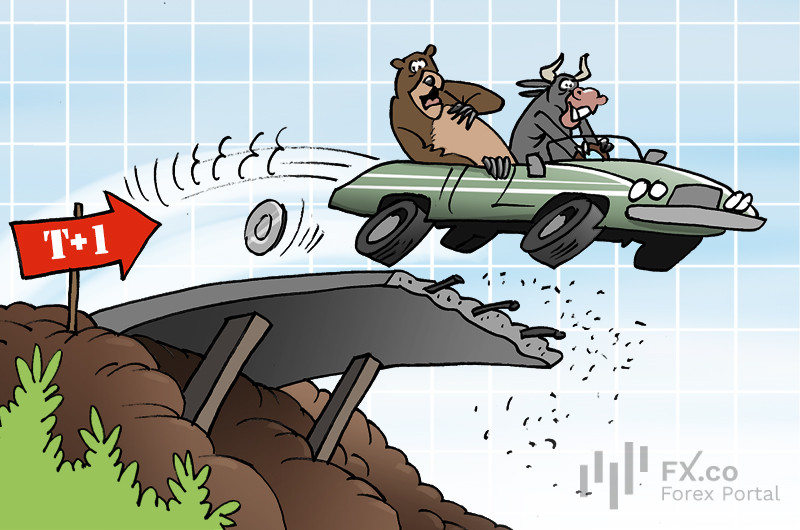

The global stock market has prepared incredible surprises for investors. US stock exchanges switched to a T+1 cycle for the first time in the last 100 years. This opens up new opportunities and is very convenient for trading.
On Tuesday, May 28, exchanges in the United States, Canada, and Mexico switched to a new mode of stock settlement, a T+1 cycle. Previously, the stock markets used T+2. Notably, in the summer of 2023, Mosbirzha and SPB Exchange transitioned to the new mode.
They launched the T+1 trading mode, which began operating on July 31 last year. This suggests an additional trading day added when Russian public companies hold corporate events. According to the new rules, in order to get into the register of shareholders and receive dividends, it is necessary to buy shares not in two trading days but in one. The advantage of the new trading mode is that it allows for quick withdrawals of funds from the brokerage account.
The transition of US exchanges to single trading and the T+1 settlement mode took place on May 28, 2024. Settlements on made transactions and delivery of purchased assets are carried out on the next trading day after the transaction was made. Previously, these operations were carried out on the second trading day. In addition to the United States, the exchanges of Canada and Mexico have also switched to the new mode.
Curiously, this settlement method was used almost 100 years ago. Wall Street has returned to it for the first time since the early 20th century. The previous shift from the T+1 system could be explained by a multiple increase in trading volumes. However, now the need for it has arisen again. After the US stock market crash in 1987, the so-called “Black Monday," the number of days for settlement was reduced to three, and in 2017, to just two days. Analysts estimate that the return to the T+1 mode should speed up settlements and minimize risks in the financial system.
After the transition, the US stock market will have to overcome two major challenges. These are double settlement days, usually on Wednesday, when the results of Friday's trades (performed via the T+2 cycle) are summarized and the settlement of Tuesday's trades (first performed via the T+1 cycle) is completed. On May 31, MSCI's rebalancing took place. Funds around the world were simultaneously selling and buying assets to match the index.
Last week, the Securities and Exchange Commission (SEC) warned that the transition might lead to a “short-term uptick in settlement fails and challenges to a small segment of market participants.”
According to analysts, the transition to T+1 is a worldwide trend followed by major trading venues. Currently, European exchanges are actively discussing this issue. At the same time, the European Union is ready to switch to a new trading mode, but a date is still unknown.
According to Bloomberg, the UK plans to switch to the new trading regime by the end of 2027. India and China have already joined the updated trading system, and now it is Australia's turn. The country’s authorities are now considering the possibility of switching to T+1.